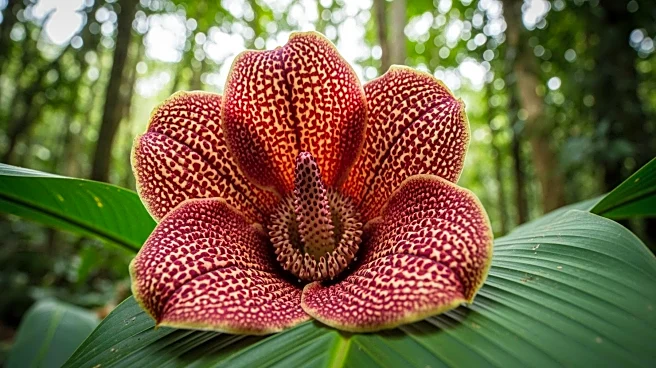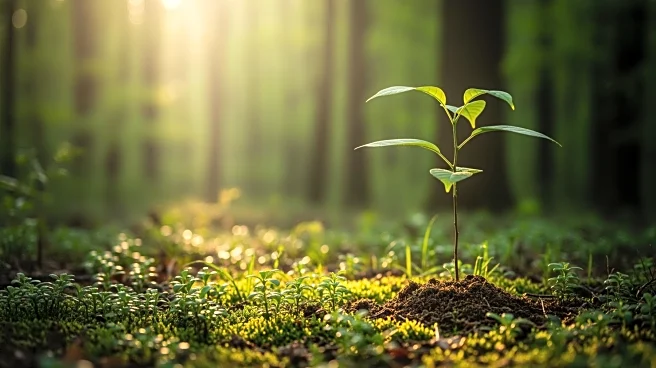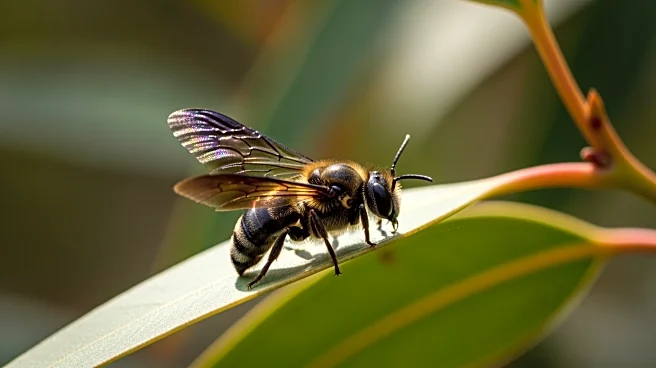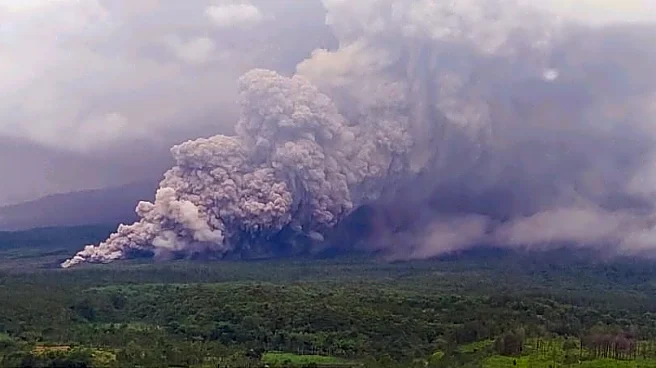What's Happening?
Dr. Chris Thorogood, an Associate Professor of Biology at Oxford University, along with Indonesian flower hunter Septian 'Deki' Andrikithat, discovered the rare Rafflesia hasseltii flower in Sumatra, Indonesia.
This discovery marked the end of a 13-year search for the elusive bloom, which is known for its giant parasitic red flowers and is rarely seen by humans. The expedition involved trekking through tiger-patrolled rainforests, and the moment was captured in an emotional Instagram video. The Rafflesia hasseltii is notable for its short blooming cycle, taking up to nine months to develop and opening for only a few days. The flower emits a foul odor similar to rotten meat, attracting flies that aid in its pollination.
Why It's Important?
The discovery of the Rafflesia hasseltii highlights the challenges of conserving rare plant species that are threatened by habitat destruction. The Rafflesia genus, which includes over 40 species, is particularly vulnerable due to its parasitic nature and dependency on specific host plants. The inability to cultivate these plants in botanical gardens further exacerbates their risk of extinction. The Oxford Botanic Garden & Arboretum aims to establish a Rafflesia conservation working group to share knowledge and best practices for habitat protection. This initiative underscores the need for international collaboration to preserve biodiversity and protect unique ecosystems.
What's Next?
Efforts to conserve the Rafflesia species will require urgent action and international cooperation. The proposed conservation working group will focus on habitat protection and knowledge exchange to safeguard these remarkable flowers. This initiative may involve partnerships with local communities, governments, and conservation organizations to implement effective strategies for preserving the natural habitats of the Rafflesia. Continued research and monitoring will be essential to understand the ecological requirements of these plants and develop sustainable conservation methods.
Beyond the Headlines
The discovery of the Rafflesia hasseltii also raises awareness about the broader implications of habitat destruction and biodiversity loss. As human activities continue to encroach on natural environments, many species face the threat of extinction. The Rafflesia's unique characteristics, such as its parasitic nature and foul odor, highlight the complexity and diversity of life forms that are at risk. Conservation efforts must address the ethical and ecological dimensions of preserving these species, emphasizing the importance of maintaining the balance of ecosystems for future generations.













